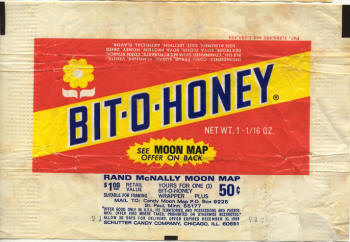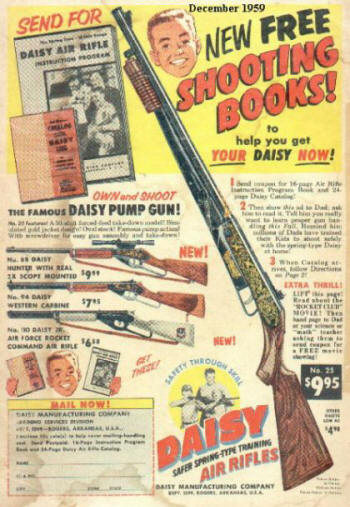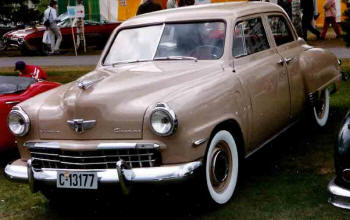Do You Remember These
It Was A Great Time To Be Alive!
Memories Of The 1950's Will Always Standout IN Our Minds
I surely remember these, do you? More 1950's To Remember
Comics
 We could hardly wait for the next comic book to come out... run to the local store! But, alas, we were READING! Comics (or, less commonly, sequential art) is a form of visual art consisting of images which are commonly combined with text, often in the form of speech balloons or image captions. Originally used to illustrate caricatures and to entertain through the use of amusing and trivial stories, it has by now evolved into a literary medium with many subgenres.
We could hardly wait for the next comic book to come out... run to the local store! But, alas, we were READING! Comics (or, less commonly, sequential art) is a form of visual art consisting of images which are commonly combined with text, often in the form of speech balloons or image captions. Originally used to illustrate caricatures and to entertain through the use of amusing and trivial stories, it has by now evolved into a literary medium with many subgenres.
The most common forms of printed comics are comic strips (most commonly four panels long) in newspapers and magazines, and longer comic stories in comic books, graphic novels and comic albums. In the first two forms the comics are secondary material usually confined to the entertainment sections, while the latter consist either entirely or primarily of comics.
Depending on the definition of the term, the origin of comics can be traced back to 15th century Europe. However, today's form of comics (with panels, and using text within the image in speech balloons, etc.), as well as the term comics itself, originated in the late 19th century.
Bit-O-Honey
 Great candy bar... super for pulling out loose teeth and sometimes your silver caps!
Great candy bar... super for pulling out loose teeth and sometimes your silver caps!
Bit-O-Honey first appeared in 1924 and was made by the Schutter-Johnson Company of Chicago, Illinois, United States. Bit-O-Honey was a new kind of candy bar consisting of six pieces of candy wrapped in wax paper and then packaged in a wrapper. The candy consists of almond bits embedded in a honey-flavored taffy made for a long-chewing candy.
It is possible to purchase the larger, candy bar version, or a bag of smaller, bite-size versions. Bit-O-Honey was acquired by the Nestlé Company in 1984, which has since continued production. Bit-O-Honey is similar in taste and packaging to Mary Jane made by Necco.
Fuzzy Dice
 Fuzzy dice in Dad's 1955 Buick... I tried but alas, no go daddy-o'. Fuzzy dice, known in the British Isles as furry dice or fluffy dice, are an automotive decoration consisting of two oversized plush dice which hang from the rear-view mirror. The classic style of fuzzy dice is white dice with black dots, roughly 3 inches on a side, although a wide variety of colors and sizes are now available in automotive supply and novelty stores. Fuzzy dice became popular in the United States for a brief period in the 1950s. Thereafter, they went through a number of cycles of popularity, but have not remained popular since the 1970s. Today, many people consider them tacky or camp.
Fuzzy dice in Dad's 1955 Buick... I tried but alas, no go daddy-o'. Fuzzy dice, known in the British Isles as furry dice or fluffy dice, are an automotive decoration consisting of two oversized plush dice which hang from the rear-view mirror. The classic style of fuzzy dice is white dice with black dots, roughly 3 inches on a side, although a wide variety of colors and sizes are now available in automotive supply and novelty stores. Fuzzy dice became popular in the United States for a brief period in the 1950s. Thereafter, they went through a number of cycles of popularity, but have not remained popular since the 1970s. Today, many people consider them tacky or camp.
Fuzzy dice are the precursor to a number of other mirror-hanging automotive accessories. The modern automobile owner is likely familiar with dangling pine tree air fresheners (Little Trees), as well as less common hanging disco balls, 8 balls, skeletons, and a bride's garter. An interesting variation is the hanging dice air freshener; such an item is generally not fuzzy but otherwise resembles fuzzy dice.
Juke Box
 Great cars, music and times! Coin-operated music boxes and player pianos carved out a place for automatic pay-per-tune music in fairgrounds, amusement parks and other public places (such as train stations in Switzerland) a few decades before the introduction of reliable coin-operated phonographs. Some of these automatic musical instruments were extremely well built and have survived to this day in the hands of collectors and museums. But commercially they could not compete with the jukebox in the long run since they were limited to the instrument (or instruments) used in their construction, and could not reproduce the human voice.
Great cars, music and times! Coin-operated music boxes and player pianos carved out a place for automatic pay-per-tune music in fairgrounds, amusement parks and other public places (such as train stations in Switzerland) a few decades before the introduction of reliable coin-operated phonographs. Some of these automatic musical instruments were extremely well built and have survived to this day in the hands of collectors and museums. But commercially they could not compete with the jukebox in the long run since they were limited to the instrument (or instruments) used in their construction, and could not reproduce the human voice.
The immediate ancestor of the jukebox, called the "Coin-slot phonograph", was the first medium of sound recording encountered by the general public, before mass produced home audio equipment became common. Such machines began to be mass produced in 1889, using phonograph cylinders for records. The earliest machines played but a single record (of about 2 minutes of music or entertainment), but soon devices were developed that allowed customers to choose between multiple records. In the 1910s the cylinder gradually was superseded by the gramophone record. The term "juke box" came into use in the United States in the 1930s, either derived from African-American slang "jook" meaning "dance", or being a name given to it by critics who said it would encourage criminal behavior, this came from the fake family name Juke. The shellac 78 rpm record dominated jukeboxes until the Seeburg Corporation introduced an all 45 rpm vinyl record jukebox in 1950 like the one used by The Fonz in Happy Days.
During the 1960s and '70s, wall box remote selectors were popular in restaurant booths. The most famous is the Seeburg 3W1. Wallboxes didn't have a record mechanism inside; instead they took coins and selected a tune to be played by a jukebox or remote unit elsewhere. The large cabinet was relegated to a back room out of view, and all 160 selections (Rock-Ola and Wurlitzer) or 200 selections (Seeburg) were available in the customer's booth.
BB Guns
 I actually got one... well through a mutual friend! Never shot my eye out but came close when a BB hit me in the forehead after striking a rock! I bet I shot 10,000 BB's. While it is often stated that "BB" stands for "ball bearing", this is not the case. The original BB guns used the BB sized lead shotgun shot, midway between B and BBB size. BB shot was nominally 0.180 inches (4.57 mm), but tended to vary considerably in size due to the high allowable tolerances for shotgun shell use. Around 1900, Daisy, one of the earliest makers of BB guns, changed their BB gun bore diameter to .175 inches (4.45 mm), and began to market precision-made lead shot specifically for their BB guns. They called this "air rifle shot", but the "BB" name was already well established, and everyone continued calling the guns "BB guns" and the shot "BB shot" or just "BBs".
I actually got one... well through a mutual friend! Never shot my eye out but came close when a BB hit me in the forehead after striking a rock! I bet I shot 10,000 BB's. While it is often stated that "BB" stands for "ball bearing", this is not the case. The original BB guns used the BB sized lead shotgun shot, midway between B and BBB size. BB shot was nominally 0.180 inches (4.57 mm), but tended to vary considerably in size due to the high allowable tolerances for shotgun shell use. Around 1900, Daisy, one of the earliest makers of BB guns, changed their BB gun bore diameter to .175 inches (4.45 mm), and began to market precision-made lead shot specifically for their BB guns. They called this "air rifle shot", but the "BB" name was already well established, and everyone continued calling the guns "BB guns" and the shot "BB shot" or just "BBs".
In the 1920s, Daisy began to receive reports of BB gun users salvaging scrap steel ball bearings for use in their guns; a number of guns came in for repair with split barrels, from oversized steel balls being forced down the barrel. The bearing manufacturer, American Ball Company, quickly seized on this as a marketing opportunity, and started to market 0.171 to 0.173 inch diameter steel air rifle shot specifically for BB guns with a bore diameter and caliber of 0.177 inches. This quickly led to an exclusive marketing agreement with Daisy, as precision ground steel BBs were cheaper to make than precision lead BBs.
DeSoto
 I lived through the tail era and can talk about it! This DeSoto was real Class!
I lived through the tail era and can talk about it! This DeSoto was real Class!
The DeSoto (sometimes De Soto) was a brand of automobile based in the United States, marketed by the Chrysler Corporation from 1928 to 1961. The DeSoto logo featured a stylized image of Hernando de Soto. Despite being a successful mid-priced line for Chrysler for most of its life, DeSoto's failure is due to a combination of corporate mistakes and external factors beyond Chrysler's control.
The 1958 recession, which seriously affected demand for mid-priced automobile makes, hurt DeSoto sales particularly hard, and they failed to recover in 1959 and 1960. With falling sales, the 1959 and 1960 models were very similar to the concurrent Chryslers, and rumors began to circulate that DeSoto would be discontinued.
Chrysler's dealer network also had an effect on the termination of DeSoto. Following World War II, Chrysler had a large number of dealers that carried two or more Chrysler makes, with Plymouth–DeSoto and Chrysler–Plymouth relationships being the most common. However, as Chrysler attempted to spin Plymouth off into stand-alone dealerships, existing dealers typically chose to become higher-volume Plymouth dealerships over the slower-selling DeSoto brand, leaving the marque with a weakened dealer network and fewer outlets selling its cars. Also, Desoto Division's failure to adjust to changing market trends by introducing a new compact car model in 1960 as its GM and Ford counterparts, as well as its own Dodge and Plymouth siblings did, also hastened its demise.
But it was Chrysler's own brand management, which pitted each of the five marques (Plymouth, Dodge, DeSoto, Chrysler and Imperial) against one other, that did the greatest damage to DeSoto and, ultimately, to the company itself in long-range product planning. Rather than carefully managing the market relationship to specific price points for all consumers, as General Motors had done so successfully, Chrysler allowed its own divisions to develop products targeting markets covered by their own sister divisions.
Transistor And AC/DC Radios

You probably do not know what an AC/DC radio is... It had tubes operating with 200 volts, no transformers, and it would shock you something silly at the drop of a hat! In 1953 Intermetall unveiled what was probably the first transistorized portable radio on the Düsseldorf Radio fair.
The first commercial transistor radio, the Regency TR-1, was announced on October 18, 1954 by the Regency Division of Industrial Development Engineering Associates of Indianapolis, Indiana and put on sale in November of 1954. It cost $49.95 (the equivalent of roughly $364 in year-2005 dollars) and sold about 150,000 units. Raytheon and Zenith Electronics transistor radios soon followed and were priced even higher. Even the first Japanese imports (in 1957) were priced at $30 and above. Transistor radios did not achieve mass popularity until the early 1960s when prices of some models fell below $20, then below $10 as markets became flooded with radios from Hong Kong by the mid to late 1960s.
Lone Ranger
 He was at the movie's with his side kick! These were real heroes! A much more well known and influential adaptation of the Lone Ranger was the (1949-1957) television series starring Clayton Moore (though with John Hart as the Lone Ranger from 1952-1954) and Jay Silverheels as Tonto. The live-action TV series initially featured Gerald Mohr as the episode narrator. He was also narrator for seven episodes of the radio series in 1949, 1950 and 1952. Fred Foy served as both narrator and announcer of the radio series from 1948 to its finish, and became announcer of the TV version when story narration was dropped there.
He was at the movie's with his side kick! These were real heroes! A much more well known and influential adaptation of the Lone Ranger was the (1949-1957) television series starring Clayton Moore (though with John Hart as the Lone Ranger from 1952-1954) and Jay Silverheels as Tonto. The live-action TV series initially featured Gerald Mohr as the episode narrator. He was also narrator for seven episodes of the radio series in 1949, 1950 and 1952. Fred Foy served as both narrator and announcer of the radio series from 1948 to its finish, and became announcer of the TV version when story narration was dropped there.
Although George W. Trendle retained the title of Producer, he recognized that his experience in radio would not be adequate for producing the television series. For this, he hired veteran MGM film producer Jack Chertok. Chertok served as the producer for the first 182 episodes, as well as a rarely seen 1955 color special, retelling the origin.
The first 78 episodes were produced and broadcast for 78 consecutive weeks without any breaks or reruns. Then the entire 78 episodes were shown again, before any new episodes were produced.
Telly Vision
 I can remember going to Arkansas on vacation and "DEMANDING" we stayed at a motel with Telly-Vision... Of course would stop at 8:00 pm and telly-vision was off the air in small towns!In television's early days, when sponsors packaged and paid for programming by themselves, advertisers found many ways to increase the frequency of their messages. Here Ted Mack and the Original Ameteur Hour offers viewers a permanent reminder of the advertiser. Sponsors were clearly identified with specific programs. It was in effect, a holdover from the earliest days of radio, when sponsors hoped in part to earn the gratitude of listeners in return for paying for programming. The advertisers in the early days of television were, like the early programs, fascinated with the sheer magic of being able to show something to the viewer.
I can remember going to Arkansas on vacation and "DEMANDING" we stayed at a motel with Telly-Vision... Of course would stop at 8:00 pm and telly-vision was off the air in small towns!In television's early days, when sponsors packaged and paid for programming by themselves, advertisers found many ways to increase the frequency of their messages. Here Ted Mack and the Original Ameteur Hour offers viewers a permanent reminder of the advertiser. Sponsors were clearly identified with specific programs. It was in effect, a holdover from the earliest days of radio, when sponsors hoped in part to earn the gratitude of listeners in return for paying for programming. The advertisers in the early days of television were, like the early programs, fascinated with the sheer magic of being able to show something to the viewer.
Studebaker
 The Gillick's had a space car! Studebaker Corporation, or simply Studebaker, was a United States wagon and automobile manufacturer based in South Bend, Indiana. Originally, the company was a producer of industrial mining wagons, founded in 1852 and incorporated in 1868[1] under the name of the Studebaker Brothers Manufacturing Company. While Studebaker entered the automotive business in 1902 with electric vehicles and 1904 with gasoline vehicles, it partnered with other builders of gasoline-powered vehicles until 1911. In 1913, Studebaker introduced the first gasoline-powered automobiles under its own "Studebaker" brand name. Acquired in 1954 by Packard Motors Company of Detroit, Michigan, Studebaker was a division of the Studebaker Packard Corporation from 1957 to 1962. In 1962, it reverted to its previous name, the Studebaker Corporation. While the company left the automobile business in 1966, Studebaker survived as an independent closed investment firm until 1967 when it merged with Worthington to become Studebaker-Worthington Corp.
The Gillick's had a space car! Studebaker Corporation, or simply Studebaker, was a United States wagon and automobile manufacturer based in South Bend, Indiana. Originally, the company was a producer of industrial mining wagons, founded in 1852 and incorporated in 1868[1] under the name of the Studebaker Brothers Manufacturing Company. While Studebaker entered the automotive business in 1902 with electric vehicles and 1904 with gasoline vehicles, it partnered with other builders of gasoline-powered vehicles until 1911. In 1913, Studebaker introduced the first gasoline-powered automobiles under its own "Studebaker" brand name. Acquired in 1954 by Packard Motors Company of Detroit, Michigan, Studebaker was a division of the Studebaker Packard Corporation from 1957 to 1962. In 1962, it reverted to its previous name, the Studebaker Corporation. While the company left the automobile business in 1966, Studebaker survived as an independent closed investment firm until 1967 when it merged with Worthington to become Studebaker-Worthington Corp.